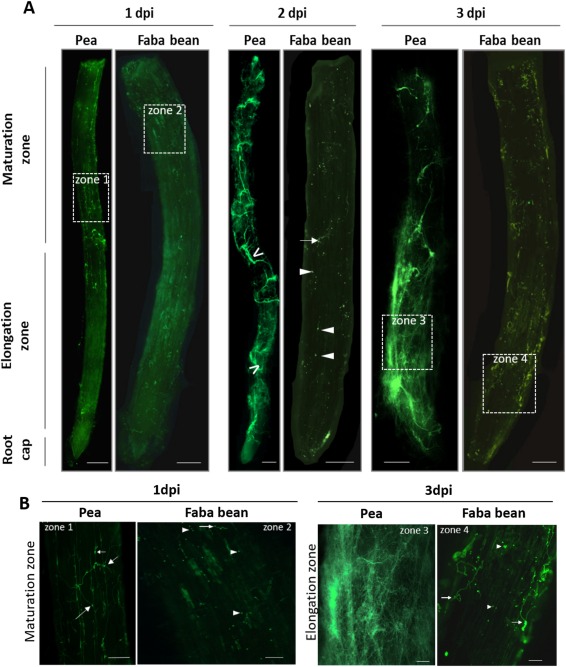Faba bean root exudates alter pea root colonization by the oomycete Aphanomyces euteiches at early stages of infection
- Recherche,
A collaborative article published in Plant science in november 2021 with Normandie University (Rouen).

vi
Authors
Yohana Laloum 1 , Christophe Gangneux 2 , Bruno Gügi 3 , Arnaud Lanoue 4 , Thibaut Munsch 4 , Adrien Blum 2 , Adrien Gauthier 2 , Isabelle Trinsoutrot-Gattin 2 , Isabelle Boulogne 3 , Maïté Vicré 3 , Azeddine Driouich 3 , Karine Laval 2 , Marie-Laure Follet-Gueye 5
Affiliations
- a AGHYLE research unit, UP 2018.C101, UniLaSalle Rouen 3 rue du tronquet CS 40118, 76134, Mont Saint Aignan, France
- b Normandie Univ, UNIROUEN, Glyco-MEV, EA4358, SFR NORVEGE FED 4277, I2C Carnot, IRIB, 76000, Rouen, France
- c Université de Tours, EA 2106 «Biomolécules et Biotechnologies Végétales», UFR des Sciences Pharmaceutiques, 31 Av. Monge, F37200, Tours, France
Abstract
Aphanomyces euteiches is an oomycete pathogen that causes the pea root rot. We investigated the potential role of early belowground defense in pea (susceptible plant) and faba bean (tolerant plant) at three days after inoculation. Pea and faba bean were inoculated with A. euteiches zoospores. Root colonization was examined. Root exudates from pea and faba bean were harvested and their impact on A. euteiches development were assessed by using in vitro assays. A. euteiches root colonization and the influence of the oomycete inoculation on specialized metabolites patterns and arabinogalactan protein (AGP) concentration of root exudates were also determined. In faba bean root, A. euteiches colonization was very low as compared with that of pea. Whereas infected pea root exudates have a positive chemotaxis index (CI) on zoospores, faba bean exudate CI was negative suggesting a repellent effect. While furanoacetylenic compounds were only detected in faba bean exudates, AGP concentration was specifically increased in pea.This work showed that early in the course of infection, host susceptibility to A. euteiches is involved via a plant-species specific root exudation opening new perspectives in pea root rot disease management.
Keywords: Aphanomyces euteiches; Pisum sativum; Vicia faba; root colonization; root exudates; specialized metabolites.
